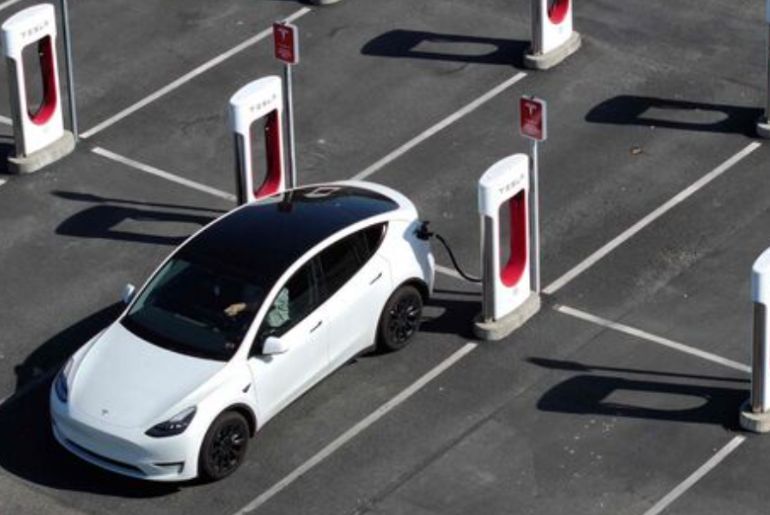Tesla’s Supercharger network has seen remarkable growth in the third quarter of 2024, marking a robost recovery from the recession earlier in the year. Between July and September, Tesla launched 2,800 new Supercharger stalls globally, a 23% increase compared to the same period in 2023. This follows a 31% decline in new stall distributions in Q2, which was allocated to layoffs within Tesla’s Supercharger division. Despite that setback, the expansion in Q3 signals a return to the fast growth expected from Tesla’s charging infrastructure.
Tesla’s Supercharger Network Expansion
By the end of September 2024, Tesla’s global network of Superchargers had grown to 6,706 stations with over 62,000 connectors, a 20% increase in total stations and a 22% increase in individual connectors over the same period the previous year. For the increasing number of non-Tesla electric vehicle (EV) owners who now have access to Tesla’s Supercharger network, as well as for Tesla owners, this expansion is pivotal.
With strong expansion in key countries, Tesla’s charging infrastructure has a wide worldwide reach. For instance, between the second quarter and the end of September, Tesla extended its network of Supercharger stations in North America by 125, increasing the total to 2,677 stations. In the United States alone, there were 2,410 stations with about 28,000 individual charges as of the end of the third quarter. Compared to earlier in the year, this is a remarkable increase, and the network is now better prepared to handle the rising demand for EV charging.
Non-Tesla EVs can now more easily utilize Tesla’s Supercharger network, boosting its position as a vital component of EV infrastructure. General Motors (GM) declared in September 2024 that their electric cars, which are manufactured by GMC, Cadillac, and Chevrolet, would be able to connect to the Supercharger network by using Tesla’s North American Charging Standard (NACS). This comes after previous deals with other automakers that are now a part of the Supercharger network, including Ford, Rivian, Honda, and Volvo. Overall, starting in 2025, these brands—as well as others like Nissan, Hyundai, Toyota, and BMW—are scheduled to incorporate NACS.
Major cities and important East-West transit corridors are home to the majority of Tesla’s Supercharger network, which guarantees quick and dependable charging for both long-distance and urban vehicles. Superchargers are among the quickest chargers on the market, according to Tesla, adding up to 200 miles of range in just 15 minutes. In order to satisfy the needs of an increasing number of EV drivers, including both Tesla and non-Tesla owners, the continuous growth places a special attention on high-traffic locations.
Although increasing the number of charging stations has accounted for a large portion of Tesla’s growth in the third quarter, the business is also targeting to improve the charging experience in general. This involves initiatives to construct stations in high-demand regions and ease charging times. In line with its dedication to sustainability and promoting the use of electric vehicles, Tesla’s broad aim is to establish a more open and reachable charging infrastructure.
In addition to adding more charging stations, Tesla’s network expansion aims to give EV owners a more smooth and effective experience. The demand for dependable, widespread charging solutions increases as more automakers join the network. Tesla is leading the EV charging infrastructure competition in the United States and around the world because of its ability to provide quick and convenient charging alternatives.
The expansion of Tesla’s Supercharger network in the third quarter, despite the setbacks in the second quarter, is encouraging for both Tesla owners and the larger EV market. As more manufacturers use NACS and more people choose electric vehicles, Tesla’s Supercharger network is expected to become even more significant in the shift to electric transportation.
Tesla’s Supercharger Network: Meeting the Growing Demand for EV Infrastructure
The worldwide EV market is increasing quickly at the same time that Tesla has been successful in growing its network of Superchargers. The need for dependable charging infrastructure keeps growing as more people buy electric cars. Therefore, the Supercharger network’s increasing attainability is essential to facilitating this shift, especially in areas with historically limited charging facilities.
Going forward, Tesla is dedicated to growing its network even more. More than 320 Supercharger locations were being built as of the end of 2024, and more than 1,100 more were in the works. As a result of its sustained expansion, Tesla will continue to play a significant role in the EV charging ecosystem, ensuring that EV owners, whether they are operating a Tesla or another brand, will always have easy access to quick and comfortable charging.
Conclusion
The entire EV ecosystem benefits from the growth of Tesla’s Supercharger network, not just Tesla owners. Tesla’s Supercharger network is positioned to continue playing a significant role in the electric vehicle market for many years to come due to its emphasis on quick distribution, high-speed charging, and wider attainability.

